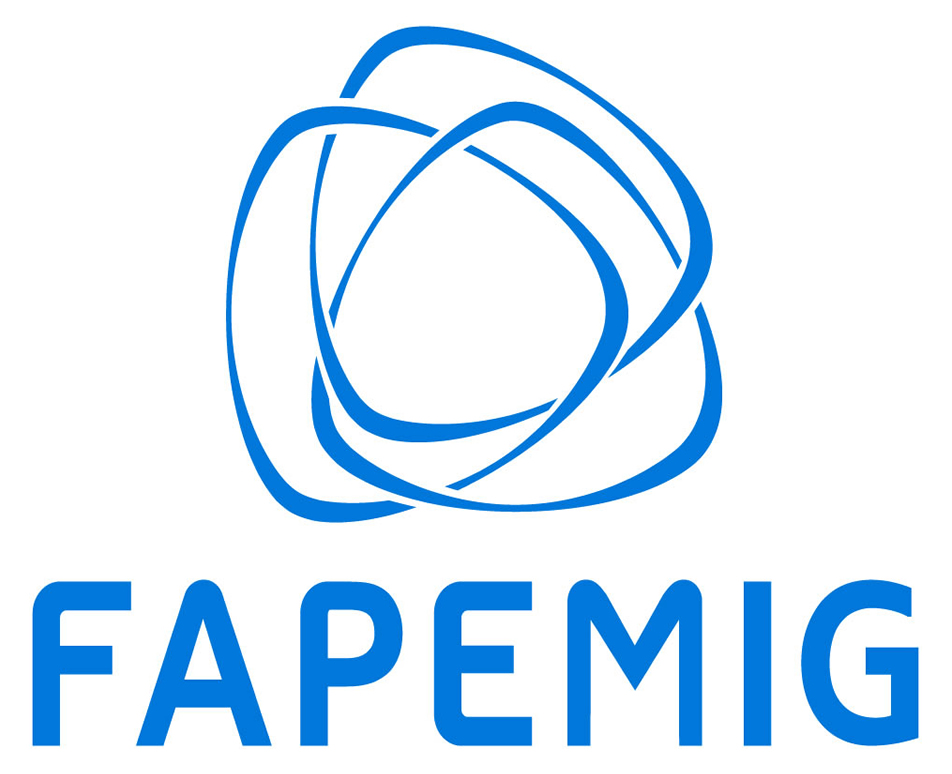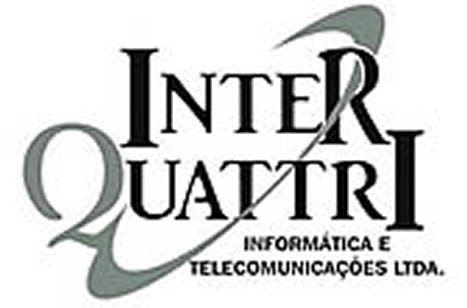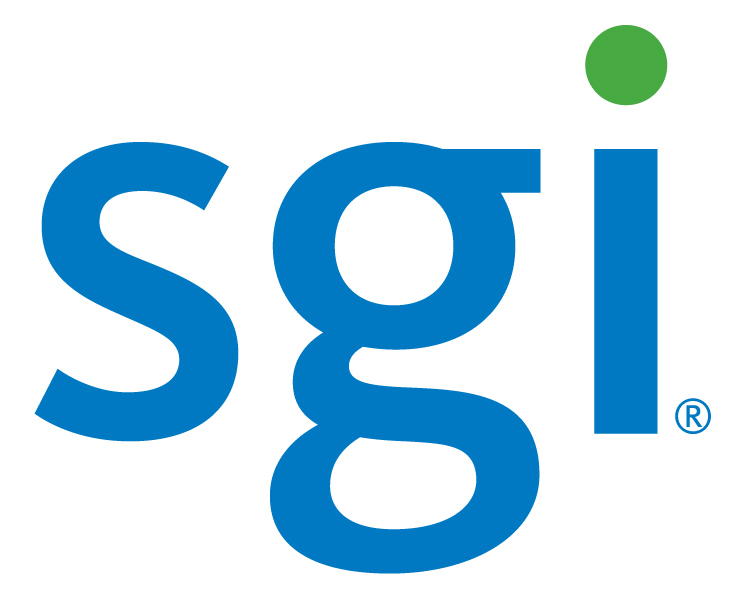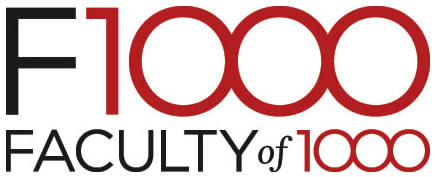Posters
| Category 'A'- Bioinformatics of Disease and Treatment' |
| Poster - A01 |
| Statistical analysis applied to ebola virus using the diferencial expression analysis of the immune system |
| Carlos Giuliani Baú, Centro Universitário Franciscano, Brazil |
| Evamberto Garcia de Goes, Universidade Federal do Rio Grande, Brazil Eder Maiquel Simão, Centro Universitário Franciscano, Brazil Luiz Henrique Rauber Rodrigues, Centro Univeritário Franciscano, Brazil Sylvio André Garcia Vieira, Centro Universitário Franciscano, Brazil |
| Short Abstract: This study of Ebola virus in humans was conducted in patients infected 1 hour and 6 hours, indicating the loss of immune capacity, contributing to fatal outcomes in some pathways of tumor system, such as tumor necrosis factor, including NFKB signaling and signaling of the antiinflammatory IL-10 pathway. |
| Poster - A02 |
| Discovery of Cruzain and Rhodesain Small Molecule Inhibitors Through Experimental Screening and Molecular Docking |
| Francielly Costa, Federal University of Minas Gerais, Brazil |
| Rafaela Ferreira, Federal University of Minas Gerais, Brazil |
| Short Abstract: In this work, we employed enzymatic assays and molecular docking to discovery potent inhibitors,against the targets cruzain and rhodesain, among 400 compounds from the Medicine for Malaria Venture (MMV) box with 10mM concentration. |
| Poster - A03 |
| Antibody-Antigen interface study helps Antibody Complementary Determining Region Prediction |
| Benjamin Viart, Laboratorio de Immunoquimica de Proteinas, Instituto de Ciênças Biologicas, Universidade Federale de Minas Gerais, Brazil |
| Julio Martins, Instituto de Ciênças Biologicas, Universidade Federale de Minas Gerais, Brazil Edgar Gonzalez Kozlova, Instituto de Ciênças Biologicas, Universidade Federale de Minas Gerais, Brazil Carlos Chavez-Olortegui, Instituto de Ciênças Biologicas, Universidade Federale de Minas Gerais, Brazil Goran Neshich, Informação Tecnólogica, Brazil Franck Molina, Sysdiag, France Liza Felicori, Laboratorio de Immunoquimica de Proteinas, Brazil |
| Short Abstract: To gain insight into the Antibody-Antigen interface we developed a new selection technique based on computationally determined molecular interactions named I2R. Using I2R we showed that distance based 5 Angstrom technique misses 8% of the interacting residues. Using the I2R epitope we predicted a third of the CDR residues with 95% sensitivity. |
| Poster - A04 |
| A genomic aproach to the molecular basis of the effect of parity on ovarian cancer risk |
| José Marquez, Laboratorio de Genomica Aplicada / ICBM-Facultad de Medicina / Universidad de Chile, Chile |
| ULISES URZUA University of Chile, Chile Sebastian Sarmiento, Laboratorio de Genomica Aplicada, Chile Carlos Chacon, Laboratorio de Genomica Aplicada, Chile |
| Short Abstract: Ovarian cancer risk is reduced by parity. Using previous parous mouse transcriptomic data, 53 ovarian genes were found linked to cancer. Eight of these were also found in a breast parous gene set. Functional analysis suggest that a robust RNA splicing and transport machinery ensures genome stability. |
| Poster - A05 |
| Parity-induced differential expression suggest a set of candidate ovarian cancer genes by estropausal age in mice |
| Sebastian Sarmiento, Laboratorio de Genomica Aplicada / ICBM-Facultad de Medicina / Universidad de Chile, Chile |
| ULISES URZUA University of Chile, Chile Carlos Chacon, Universidad de Chile, Chile Jose Marquez, Universidad de Chile, Chile |
| Short Abstract: Parity reduces ovarian cancer risk presumably due to the action of pregnancy hormones. Differential ovarian expression between naturally aged multiparous and nulliparous C57BL6 female mice identified 160 genes, 25 of which are implicated in cancer. Selected tumor suppressors and sphingosine metabolism genes seem to be candidates for future studies. |
| Poster - A06 |
| Prioritization of disease candidates in miRNA-disease associations based on maximum weighted matching inference model and motif-based analysis |
| Joseph Nalluri, Virginia Commonwealth University, United States |
| Bhanu Kamapantula, Virginia Commonwealth University, United States Debmalya Barh, Institute of Integrative Omics and Applied Biotechnology (IIOAB), India Vasco Azevedo, Universidade Federal de Minas Gerais, Brazil Sintia Silva de Almeida, Universidade Federal de Minas Gerais, Brazil Artur Silva, Universidade Federal de Minas Gerais, Brazil Rommel Thiago Jucá Ramos, Universidade Federal de Minas Gerais, Brazil Neha Jain, Institute of Integrative Omics and Applied Biotechnology (IIOAB), India Antaripa Bhattacharya, Institute of Integrative Omics and Applied Biotechnology (IIOAB), India Preetam Ghosh, Virginia Commonwealth University, United States |
| Short Abstract: None On File |
| Poster - A07 |
| Artificial neural network applied to characterization of gestational diabetes mellitus |
| Ana Filus Bandeira, Federal University of Paraná, Brazil |
| Waldemar Volanski, Federal University of Paraná, Brazil Izabella Castilhos Ribeiro do Santos-Weiss, Federal University of Paraná, Brazil Roberto Tadeu Raittz, Federal University of Paraná, Brazil Jeroniza Nunes Marchaukoski, Federal University of Paraná, Brazil Geraldo Picheth, Federal University of Paraná, Brazil |
| Short Abstract: Development of markers and tools that can identify the gestational diabetes mellitus early are of great interest. In this study, artificial neural networks were applied to analyze laboratorial parameters for automatic GDM identification. |
| Poster - A08 |
| Cancer missense mutations in β-2-microglobulin result in aggregation |
| Jose Soto-Lambert, Universidad Nacional Andres Bello, Chile |
| Felipe Venegas Faúndez, Universidad Andrés Bello, Chile Daniel Almonacid Coronado, Universidad Andrés Bello, Chile |
| Short Abstract: We found that β2m is significantly mutated in cancer and forms aggregates. The role of mutations affecting the aggregation of β2m was calculated with different methods based on force fields as well as evolutionary principles. We finally found 5 cancer mutations involved in aggregation of β2m. |
| Poster - A09 |
| ANALYSIS OF GENE EXPRESSION IN PATHWAYS OF MAINTAINING THE GENOME IN ADENOMAS AND ADENOCARCINOMAS |
| Luiz Henrique Rauber-Rodrigues, Centro Universitário Franciscano, Brazil |
| Evamberto Garcia de Góes, Universidade Federal do Rio Grande, Brazil Éder Maiquel Simão, Centro Universitário Franciscano, Brazil |
| Short Abstract: Analysis gene expression using software modeling pathways containing data integration as Cytoscape, facilitates the identification of results, such gene expression, co-expression, and its links with other genes. Was development of adenoma and adenocarcinoma Colon, Adrenal, Pancreas and Thyroid, resulted in 104 graphs and highlighting two genes expressed in all situations. |
| Poster - A10 |
| Molecular docking and ADME-Tox prediction of new plausible HIV-1 nucleoside reverse transcriptase inhibitors |
| Vanessa Silva, Fundação Oswaldo Cruz, Brazil |
| Lucianna Santos, Fundação Oswaldo Cruz, Brazil Monica Bastos, Far-manguinhos, Brazil Nubia Boechat, Far-Manguinhos, Brazil Ernesto Caffarena, Fundação Oswaldo Cruz, Brazil |
| Short Abstract: Nucleoside reverse transcriptase inhibitors currently available on the market are very toxic. However, there is a need for new drugs which are less toxic to patients. Therefore, we use the methods of molecular docking and ADME-Tox prediction to evaluate the possible activity of new anti-HIV drugs. |
| Poster - A11 |
| Evaluation of alternative splicing of the Human Papillomavirus oncogenes E6 and E7 in cervical tumors |
| Ayslan Brant, Instituto Nacional de Câncer, Brazil |
| Sérgio Filho, INCA, Brazil João Paulo Vidal, INCA, Brazil Shayany Felix, INCA, Brazil Luís Felipe Martins, INCA, Brazil Neile Carvalho, INCA, Brazil Cláudia Bessa, INCA, Brazil Lina Maria Vieira, INCA , Brazil Patrícia Patury, INCA, Brazil Vanessa Franco, INCA, Brazil Aurenice Carvalho, INCA, Brazil Liz Maria Almeida, INCA, Brazil Miguel Moreira, INCA, Brazil Albert Menezes, INCA, Brazil |
| Short Abstract: In Cervical tumors, the HPV 16 E6 and E7 genes can potentially produce nine spliced mRNAs. Our goal was to describe the splicing patterns of E6/E7 pre-mRNAs in cervical tumors of different histological types associated with HPV16 using Next Generation Sequencing strategy. |
| Poster - A12 |
| Phylogeny of Xenorhabdus |
| Musumba Awori, International Centre for Insect Physiology and Ecology, Kenya |
| Dan Masiga, International Centre for Insect Physiology and Ecology (icipe), Kenya Charles Waturu, Kenya Agriculture and Livestock Research Organisation, Kenya Francis Mwaura, University of Nairobi , Kenya Bernard Kulohoma, International Centre for Insect Physiology and Ecology (icipe), Kenya Nelson Amugune, University of Nairobi , Kenya Waruguru Wanjau, University of Nairobi , Kenya Wambui Kariuki, Trek Science, Kenya Murugi Kagotho, Trek Science, Kenya Rose Mbeya, Trek Science, Kenya Noytu Gitau, Trek Science, Kenya Peter Ng'an'ga, International Centre for Insect Physiology and Ecology (icipe), Kenya Lorine Nyongesa, International Centre for Insect Physiology and Ecology (icipe), Kenya |
| Short Abstract: Xenorhabdus is a bacterial genus that serves as a source of novel antibiotics in the wake of global antimicrobial resistance. A phylogenetic reconstruction of the genus was done to enable fast identification of isolates. This is important to antibiotic development as different Xenorhabdus species have different antibiotic profiles |
| Poster - A13 |
| Mendel,MD: a user-friendly online program for clinical exome analysis |
| Raony Cardenas, Universidade Federal de Minas Gerais, Brazil |
| Natália D Linhares, Faculdade de Medicina da UFMG/Universidade Federal de Minas Gerais, Brazil Sérgio DJ Pena, Faculdade de Medicina da UFMG/Universidade Federal de Minas Gerais, Brazil |
| Short Abstract: We present a free and open-source tool that can be downloaded, installed and executed locally by any laboratory in the world with aim to analyze exomic data from their patients. Mendel,MD is an efficient, secure and reliable software in exploration of variants from exome data of patients with Mendelian disorders. |
| Poster - A14 |
| Conservation and correlation analysis of the papain-like cysteine protease family |
| Thais Cristine Leonel, Universidade Federal de Minas Gerais, Brazil |
| Lucas Bleicher, Universidade Federal de Minas Gerais, Brazil |
| Short Abstract: Papain-like cysteine proteases are a ubiquitous class of proteinases, with homologs found in all kingdoms and also viruses. Most importantly, some members of these protein families are validated drug targets human parasites. Here, we use statistical analysis of multiple sequence alignments to identify and characterize key residues in this family. |
| Poster - A15 |
| The kinetics of siRNA response against Dengue virus in Aedes aegypti mosquitoes |
| Roenick Olmo, Universidade Federal de Minas Gerais, Brazil |
| Eric Roberto Aguiar, Universidade Federal de Minas Gerais, Brazil Simona Paro, CNRS-IBMC, France Kátia Helena Osório, Universidade Federal de Minas Gerais, Brazil Luciano Moreira, Centro de Pesquisa René Rachou, Brazil Jean-Luc Imler, CNRS-IBMC, France João Marques, Universidade Federal de Minas Gerais, Brazil |
| Short Abstract: Dengue fever, caused by Dengue virus, is one of the most important human infectious diseases in the world. To study arbovirus-host response mediated by the RNAi pathway during infection we are characterizing the RNAi mediated antiviral response against Dengue virus by the mosquito Aedes aegypti. |
| Poster - A16 |
| Metabolic advancement of multidrug resistant E.coli: A Comparative Metabolomics analysis of Multidrug resistant and Pathogenic Isolates E. coli Strain with Commensal E. coli Strain. |
| sandeep tiwari, Universidade Federal de Minas Gerais, Brazil |
| Syed Babar Jamal, Institute of Biological Sciences, Federal University of Minas Gerais,, Brazil Leticia C Oliveira, Institute of Biological Sciences, Federal University of Minas Gerais,, Brazil Syed Shah Hassan, Institute of Biological Sciences, Federal University of Minas Gerais,, Brazil Sintia Almeida , Institute of Biological Sciences, Federal University of Minas Gerais,, Brazil Vinícius Augusto Carvalho de Abreu , Institute of Biological Sciences, Federal University of Minas Gerais,, Brazil Vasco Azevedo, Institute of Biological Sciences, Federal University of Minas Gerais,, Brazil |
| Short Abstract: NGS platform provided large amount of data for the analysis. Here in this work all analysis include in-silico analysis of whole genome of E.coli using comparative metabolic approach to find out unique metabolic pathways between the pathogenic ,multidrug resistant in comparison to commensal E.col |
| Poster - A17 |
| Identification of biomarkers in prostate cancer integrating epigenomics, non-conding and trancriptome data |
| Hellen Kuasne, AC Camargo Cancer Center and UNESP, Brazil |
| Fabio Marchi, AC Camargo Cancer Center, Brazil Alexandre Paschoal, Federal Technological University of Paraná, Brazil |
| Short Abstract: This work aimed to identify new genetic and epigenetic biomarkers for diagnosis and prognosis of Prostate cancer (PCa) using The Cancer Genome Atlas data. We analyzed methylation, miRNA expression and gene expression usisng edgeR and Limma packages. We identified miRNA and transcripts that are functionally associated with CaP. |
| Poster - A18 |
| RECENT ADVANCES IN MOLECULAR DOCKING EXPERIMENTS OF FULLY-FLEXIBLE RECEPTOR MODELS |
| Holisson Cunha, Pontifícia Universidade Católica do Rio Grande do Sul, Brazil |
| Renata De Paris, Pontifícia Universidade Católica do Rio Grande do Sul, Brazil Christian Quevedo, Pontifícia Universidade Católica do Rio Grande do Sul, Brazil Duncan Ruiz, Pontifícia Universidade Católica do Rio Grande do Sul, Brazil Osmar Norberto de Souza, Pontifícia Universidade Católica do Rio Grande do Sul, Brazil |
| Short Abstract: The high computational demand required for performing VS in an FFR model against small molecule database is an unsolved problem. This work presents strategy solutions that have been developed by LABIO-GPIN laboratories by reducing the dimensionality of FFR models without losing their crucial information, aiming at improving the RDD process. |
| Poster - A19 |
| Analysis of the Trypanosoma cruzi transcriptome in response to gamma radiation |
| Michele A. Pereira, Universidade Federal de Minas Gerais, Brazil |
| Michele Pereira Universidade Federal de Minas Gerais, Brazil Mariana Boroni, Universidade Federal de Minas Gerais, Brazil André L. M. Reis, Universidade Federal de Minas Gerais, Brazil Carolina F. Castro, Universidade Federal de Minas Gerais, Brazil Helaine G. S. Vieira, Universidade Federal de Minas Gerais, Brazil Priscila Grynberg, Embrapa, Brazil Glória R. Franco, Universidade Federal de Minas Gerais, Brazil |
| Short Abstract: Trypanosoma cruzi, the etiologic agent of Chagas disease, is a kinetoplastid organism highly resistant to DNA damage caused by ionizing radiation. This study aims to compare the gamma radiation effect to the T. cruzi transcriptional profile using high-throughput RNA sequencing (RNA-seq). |
| Poster - A20 |
| Two-color microarray data analysis taking into account probe-level inaccuracies |
| Adèle Ribeiro, University of São Paulo, Brazil |
| Roberto Hirata Júnior, University of São Paulo, Brazil Júlia Maria Pavan Soler, University of São Paulo, Brazil |
| Short Abstract: To analyze two-color microarrays data, we propose two improved estimation for the relative expression of genes which consider the probe-level measurements of errors. The results show that by including additional information from the imprecisions in the analysis it is possible to improve inferences and prevent misleading conclusions. |
| Poster - A21 |
| IMAGE INTERPRETATION OF PRESSURE ULCERS THROUGH MODEL BASED IN SMART SOFTWARE |
| Aline Lopes Coelho, Institute of Education and Research of the Santa Casa of Belo Horizonte, Brazil |
| Aline Coelho Institute of Education and Research of the Santa Casa of Belo Horizonte, Brazil Carlos Henrique da Silveira, Federal University of Itajubá, Brazil Luiz Ronaldo Alberti, Federal University of Minas Gerais, Brazil Wandré Nunes de Pinho Veloso, Federal University of Itajubá, Brazil Biharck Muniz Araújo, Federal University of Minas Gerais, Brazil |
| Short Abstract: The classification of the Pressure Ulcers are performed by inspecting the lesion, which must observe the staining of tissue, depth, aspect secretion; addition to measuring the size of the wound, however this analysis is subjective to each professional. Therefore, the use of apparatuses technology applied in the monitoring of wounds. |
| Poster - A22 |
| Mining for adverse drug events on twitter |
| Felipe Duval, Fundação Oswaldo Cruz, Brazil |
| Ernesto Caffarena, Fundação Oswaldo Cruz, Brazil Oswaldo Cruz, Fundação Oswaldo Cruz, Brazil Fabrício Silva, Fundação Oswaldo Cruz, Brazil |
| Short Abstract: The main purpose of this work is to prove that Twitter can be used as a source to find new and already known adverse drug events. This proposal has a prominent social relevance, as it will help pharmacovigilance systems. |
| Poster - A23 |
| Assessing the functional impact of cancer mutations in DNA binding proteins through bioinformatics approaches |
| Daniel Pizarro, Universidad Andrés Bello, Chile |
| Daniel Almonacid Coronado, Universidad Andrés Bello, Chile |
| Short Abstract: We hypothesized that mutations in recognition domains of DNA binding proteins (DBPs) result in binding of a different DNA target sequence with similar binding affinity to that for the normal ligand. This was tested by knowledge-based and biophysical-based approaches using DBPs significantly mutated in 19 types of cancer |
| Poster - A24 |
| A Framework for Performing Molecular Docking Simulations with Carbon Nanotubes |
| Karina Machado, Universidade Federal do Rio Grande, Brazil |
| Luisa Cornetet, Universidade Federal do Rio Grande - FURG, Brazil Michael Durruthy, Universidade Federal do Rio Grande - FURG, Brazil Jose Monserrat, Universidade Federal do Rio Grande - FURG, Brazil Adriano V. Werhli, Universidade Federal do Rio Grande - FURG, Brazil |
| Short Abstract: In this work we propose a framework to generate scripts to execute molecular docking simulations specifically for Carbon Nanotubes inhibitors.In order to validate the framework we performed a case study considering as target receptor the ANT-1 protein and as ligands different pristine carbon nanotube geometries: armchair, chiral and zigzag. |
| Poster - A25 |
| Mutational analysis of genes coding for cell surface proteins in colorectal cancer cell lines reveal novel altered pathways, druggable mutations and mutated epitopes for targeted therapy |
| Elisa Donnard, Hospital Sirio Libanes, Brazil |
| Paula Asprino, Hospital Sirio Libanes, Brazil Bruna Correa, Hospital Sirio Libanes, Brazil Fabiana Bettoni, Hospital Sirio Libanes, Brazil Fernanda Koyama, Hospital Sirio Libanes, Brazil Raphael Parmigiani, Hospital Sirio Libanes, Brazil Pedro Galante, Hospital Sirio Libanes, Brazil Anamaria Camargo, Ludwig Institute for Cancer Research, Brazil |
| Short Abstract: We carried out a mutational analysis of 3,594 genes coding for cell surface proteins (Surfaceome) in 23 colorectal cancer cell lines, searching for new altered pathways, druggable mutations and mutated epitopes for targeted therapy in colorectal cancer. A total of 3,944 somatic non-synonymous substitutions and 595 InDels, occurring in 2,061 (57%) Surfaceome genes were catalogued. We identified 48 genes not previously described as mutated in colorectal tumors in the TCGA database, including genes that are mutated and expressed in >10% of the cell lines (SEMA4C, FGFRL1, PKD1, FAM38A, WDR81, TMEM136, SLC36A1, SLC26A6, IGFLR1). Analysis of these genes uncovered important roles for FGF and SEMA4 signaling in colorectal cancer with possible therapeutic implications. We also found that cell lines express on average 11 druggable mutations, including frequent mutations (>20%) in the receptor tyrosine kinases AXL and EPHA2, which have not been previously considered as potential targets for colorectal cancer. Finally, we identified 82 cell surface mutated epitopes, however expression of only 30% of these epitopes was detected in our cell lines. Notwithstanding, 92% of these epitopes were expressed in cell lines with the mutator phenotype, opening new venues for the use of “general” immune checkpoint drugs in this subset of patients. |
| Poster - A26 |
| Vallys, a sane coverage analysis tool for clinical sequencing. |
| Marcel Caraciolo, Genomika Diagnósticos Lab, Brazil |
| Short Abstract: In clinical sequencing one of the main questions when sequencing targeted region is to answer how well the genes of interest are covered. Coverage analysis is one of the critical steps in clinical DNA sequencing, specially to analyse coverage and general quality of sequencing. Our current work is to provide an tool that automates the coverage analysis with an intuitive and easy-to-read reports that can be integrated in most bioinformatic pipelines. |
| Poster - A27 |
| Comparative genomics and in-silco subtractive genomics approach for targeting multidrug resistant Neisseria gonorrhoeae with medicinal-plant-derived antimicrobial compounds. |
| Syed Jamal, Universidade Federal de Minas Gerais, Brazil |
| Sandeep Tiwari, Federal University of Minas Gerais, Brazil Leticia C. Oliveira, Federal University of Minas Gerais, Brazil Syed Shah Hassan, Federal University of Minas Gerais, Brazil Sintia Almeida, Federal University of Minas Gerais, Brazil Vinicious AC Abreu, Federal University of Minas Gerais, Brazil Vasco Azevedo, Federal University of Minas Gerais, Brazil |
| Short Abstract: N.gonorrhoeae is responsible for causing gonorrhea emergence of antimicrobial resistance in N. gonorrhoeae to a range of antibiotics with no new therapeutic agents.Compounds derived from medicinal plants are better enough for their accessibility and low price.Hence, these compounds can be used as putative drug targets against resistance in N. gonorrhoeae |
| Poster - A28 |
| USING SYSTEM BIOLOGY TO PREDICT NEW TARGETS FOR TREATMENT OF CANCER GASTRIC |
| Gerson de Almeida, Institute of Biosciences of Botucatu - UNESP, Brazil |
| Agnes Takeda, Institute of Biosciences - UNESP, Brazil Jose Luiz Rybarczyk-Filho, Institute of Biosciences - UNESP, Brazil |
| Short Abstract: Using the techniques of systems biology to find possible targets for new chemotherapeutic agents to develop more effective treatments |
| Poster - A29 |
| Comparative proteomics of cerebrospinal fluid reveals a predictive model for differential diagnosis of pneumococcal, meningococcal, and enteroviral meningitis, and novel putative therapeutic targets |
| Roney Coimbra, FIOCRUZ, Brazil |
| Ana Cordeiro, FIOCRUZ, Brazil Rosiane Pereira, FIOCRUZ, Brazil Don Chapeaurouge, FIOCRUZ, Brazil Clarice Coimbra, FIOCRUZ, Brazil Guilherme Oliveira, FIOCRUZ, Brazil Talitah Candiani, FHEMIG, Brazil |
| Short Abstract: None On File |
| Poster - A30 |
| Analyse multiple disease subtypes and build associated gene networks using genome-wide expression profiles |
| Javier De Las Rivas, Centro de Investigacion del Cancer (CiC-IBMCC, CSIC/USAL), Spain |
| Sara Aibar, Centro de Investigacion del Cancer (CiC-IBMCC, CSIC/USAL), Spain Celia Fontanillo, Centro de Investigacion del Cancer (CiC-IBMCC, CSIC/USAL), Spain Conrad Droste, Centro de Investigacion del Cancer (CiC-IBMCC, CSIC/USAL), Spain Beatriz Roson, Centro de Investigacion del Cancer (CiC-IBMCC, CSIC/USAL), Spain Francisco J Campos-Laborie, Centro de Investigacion del Cancer (CiC-IBMCC, CSIC/USAL), Spain Jesus M Hernandez-Rivas, Hospital Universitario de Salamanca (HUS), Spain |
| Short Abstract: None On File |
| Poster - A31 |
| In silico approach for Reverse Phase Protein Arrays analysis |
| Danillo Almeida-e-Silva, Universidade de São Paulo, Brazil |
| Raquel Tognon, Universidade de São Paulo, Brazil Fabíola Castro, Universidade de São Paulo, Brazil |
| Short Abstract: Reverse Phase Protein Arrays (RPPA) allows evaluating several proteins in many samples in the same experiment. In this study, we explored patterns of protein expression and activity between myeloproliferative neoplasms patients and healthy individuals using RPPA. Based on KEGG database and statistical methods we found relevant differential profiles. |
| Poster - A32 |
| METABOLIC INTERACTION ANALYSIS BETWEEN Chlamydomonas reinhardtii AND Pseudomonas aeruginosa FOR PHENOL DEGRADATION BASED ON GENOMIC SCALE MODELING |
| Astrid Catalina Alvarez Yela, Universidad de los Andes, Colombia |
| Harvey Arevalo Caicedo Andes University, Colombia David Orlando Paez Melo, Andes University, Colombia Andres Fernando Gonzalez Barrios, Andes University, Colombia |
| Short Abstract: From an in silico approach of a bioremediation case, is proposed and developed a feasible microalgae-bacteria consortium aimed to phenol degradation using genome-scale models from Chlamydomonas reinhardtii and Pseudomonas aeruginosa. |
Posters
Poster Presentation List & Schedule
Odd numbers:
Poster set up: Day 1 - all day long
Take down: Day 2 after Poster Session
Size: Up to 90cm width x 120 cm height
Even Numbers:
Poster set up: Day 2 after Poster session and Day 3 until the first coffee break
Take Down: Day 3 after Poster Session
Size: Up to 90cm width x 120 cm height
| View Posters By Category |
- A) Bioinformatics of Disease and Treatment
- B) Bioinformatic tools and databases
- C) Computational aspects
- D) Comparative Genomics
- E) Education
- F) Epigenetics
- G) Functional Genomics
- H) Genome Organization and Annotation
- I) Genetic Variation Analysis
- J) Metagenomics
- K) Pathogen informatics
- L) Population Genetics Variation and Evolution
- M) Protein Structure and Function Prediction and Analysis
- N) Proteomics
- O) Sequence Analysis
- P) Systems Biology and Networks
- Q) Other
| Search Posters: |
TOP






